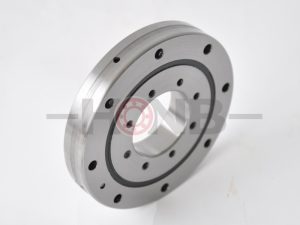Home > News > Product Knowledge > Analysis and Elimination of Common Faults on Needle Roller Bearings
Analysis and Elimination of Common Faults on Needle Roller Bearings
Author: hongyuanTime:
Needle roller bearings are a kind of roller bearings with cylindrical rollers. They are commonly used in automobiles or motorcycles in our daily life. Needle roller bearings will inevitably have some failures in use. According to the understanding of needle roller bearings , Tell you about some common failure factors of needle roller bearings, and related methods to eliminate bearing failures.
Common faults of needle roller bearings and their causes:
1. Fault form:
(1) The bearing is difficult to rotate and generates heat;
(2) There is abnormal sound in the bearing operation;
(3) The bearing generates vibration;
(4) Peeling and cracking of the inner race;
(5) Peeling and cracking of the outer race;
(6) The bearing raceways and rolling elements produce indentations.
2. Failure cause analysis:
(1) The inspection before assembly is not careful. The bearing should be cleaned before assembly and carefully inspect the inner and outer races, rolling elements and cage of the bearing for rust, burrs, bruises and cracks; check whether the bearing clearance is appropriate, whether the rotation is brisk and free, and whether there is sudden blocking At the same time, check the size, roundness and cylindricity of the shaft diameter and bearing seat hole, and whether there are burrs or unevenness on the surface. For split bearing housings, it is required to leave a gap of 0.1mm~0.25mm between the joint surface of the bearing cover and the bearing base and the outer circular surface of the outer race to prevent “clamping” at the “tile mouth” on both sides of the outer housing. The gap caused by the “gang” phenomenon is reduced, the wear is accelerated, and the bearing is damaged prematurely.
(2) Improper assembly. Improper assembly will lead to the above-mentioned various failure modes of the bearing, as well as the following situations:
A. Improper coordination:
The cooperation between the inner hole of the bearing and the shaft adopts the base hole system, and the cooperation between the outer circle of the bearing and the housing hole adopts the base shaft system. Generally, the shafts and bearing inner races of centrifugal pumps, centrifuges, reducers, motors and centrifugal compressors working under normal load conditions adopt J5, js5, js6, k5, k6, m6 to match, and the bearing seat hole and bearing The outer race adopts j6, J7 fit. The rotating seat ring (the inner race of most bearings is a rotating race, the outer race is not a rotating race, and a few bearings are the opposite), usually using interference fit, which can avoid the seat ring under the load. Rolling and sliding occurs on the mating surface with the housing bore.
However, sometimes due to the inaccurate measurement of the shaft diameter and the bearing seat hole or the roughness of the mating surface does not meet the standard requirements, excessive interference fit is caused, and the bearing race is greatly squeezed, resulting in radial clearance of the bearing itself. The reduction will make the bearing difficult to rotate, generate heat, increase wear or get stuck, and in severe cases, it will cause the inner and outer races of the bearing to crack when they are installed. The non-rotating seat ring often adopts a fit with a small gap or interference, so that the non-rotating seat ring may produce slight creep, so that the contact surface between the seat ring and the rolling body is constantly replaced, and the raceway of the seat ring wears evenly. At the same time, it can also eliminate the axial jamming of the rolling elements in the bearing due to the thermal elongation of the shaft. However, excessive clearance fit will cause the non-rotating seat ring to rotate with the rolling elements, resulting in severe wear of the shaft (or bearing housing hole) and the inner race (or outer race), and friction will cause the bearing to heat up and vibrate.
B. Improper assembly method:
When the interference between the bearing and the shaft diameter or the housing hole is small, the press-fit method is often used for assembly. The easiest way is to use a copper rod and a hand hammer to symmetrically tap the seat ring with the interference fit of the bearing in a certain order, so that the bearing can be pressed in smoothly. In addition, a casing made of soft metal can also be hammered in or pressed in with a press. If the operation is not done properly, the seat ring will be deformed and cracked, or the hand hammer on the non-interference fit seat ring will cause indentation on the raceway and rolling elements or the bearing will be indirectly damaged.
C. Improper temperature control during assembly:
When assembling needle roller bearings, if the interference with the shaft diameter is large, they are generally assembled by shrink fitting. That is to say, the bearing is put into an oil barrel filled with organic oil, and the outside of the oil barrel is heated with hot water or flame. The process requires that the temperature of the heated oil be controlled at 80°C~90°C, generally not exceeding 100°C, and at most not exceeding 120°C. After the bearing is heated, quickly take it out and fit it on the journal. If the heating temperature is too high due to improper temperature control, the bearing will be tempered and the hardness will be reduced, and the bearing will be easily worn, peeled off, or even cracked during operation.
D. Improper clearance adjustment during assembly:
The clearance of needle roller bearings is divided into radial clearance and axial clearance. Its function is to ensure the normal operation and lubrication of the rolling elements and to compensate for thermal elongation.
For bearings with adjustable clearance, because there is a proportional relationship between the axial clearance and the radial clearance, the required radial clearance can be obtained as long as the axial clearance is adjusted during installation, and cutting them is generally Used in pairs (that is, installed at both ends or one end of the shaft), therefore, only the axial clearance of one bearing needs to be adjusted. Generally, gaskets are used to adjust the axial clearance, and some can also be adjusted by screws or thrusters. For needle roller bearings whose clearance cannot be adjusted, because the radial clearance has been determined according to the standard during manufacture, it cannot be adjusted. After such bearings are installed on the shaft diameter or in the bearing seat hole, the actual radial clearance is called In order to assemble the radial clearance, the size of the assembly radial clearance should be just enough to form the necessary working radial clearance during operation to ensure the flexible rotation of the bearing. When this type of bearing is working, the relative displacement of the inner race occurs due to the heat elongation of the shaft when the temperature rises, so that the radial clearance of the bearing is reduced, and even the rolling elements are stuck between the inner and outer races. If an axial gap is left between one of the double-supported needle roller bearings (the other bearing is fixed on the shaft and in the bearing seat) and the side cover, the above phenomenon can be avoided.
It can be seen from the above that regardless of the needle roller bearings with adjustable clearance or non-adjustable clearance, they must adjust the axial clearance during assembly (but some bearings with non-adjustable clearance do not need to leave axial clearance), so as to compensate for the temperature rise of the shaft. When the thermal elongation, so as to ensure the normal operation of the rolling element. If the axial clearance is too small, it will cause the bearing to rotate difficultly, generate heat, and even cause the rolling elements to be stuck or damaged; if the axial clearance is too large, it will cause abnormal noise during operation, and even cause severe vibration or damage the cage .
E. Improper coupling alignment:
The input shaft of most operating equipment is connected to the power shaft through a coupling, so the coupling must be aligned during assembly so that the driving shaft and the driven shaft are on the same axis.
(3) Poor lubrication. The lubricating oil (or grease) used in needle roller bearings has a certain working temperature. When the temperature is too high, it will deteriorate, thus losing its lubrication effect and causing the bearing to burn out due to high temperature. In addition, poor quality of lubricating oil (or grease) itself or untimely refueling (grease) during operation will also cause the temperature of the bearing to rise or produce abnormal noise.
(4) The rotor is unbalanced. Generally speaking, the rotor of the operating equipment must be dynamically and statically balanced before assembly, so there will be no problems with the bearings. However, some rotors are corroded by the medium or worn by solid impurities during operation, or the shaft is bent, which will cause unbalanced centrifugal force, which will cause the bearing to heat up, vibrate, and the raceway will be severely worn until it is destroyed.
(5) The inspection and replacement is not timely. During the operation of the bearing, check it regularly according to the regulations. If there is heat, abnormal sound, vibration, etc., stop the car in time to find the cause and eliminate the fault. When it is reduced to HRC<60, or there is too much noise and cannot be adjusted, it should be replaced in time. If the inspection and replacement are not timely, it will cause serious damage to the bearing and even the rotor, thereby affecting normal production. In addition, the vibration caused by improper disassembly of the bearing and loosening of the anchor bolts of the equipment will also cause indentations on the bearing raceway and rolling elements, and cracks on the inner and outer races of the bearing.
Methods to eliminate needle roller bearing failures:
(1) When replacing bearings, carefully check the new bearings, and at the same time carefully check the shaft diameter, bearing seat hole and rotor;
(2) When assembling and disassembling bearings, strictly implement the maintenance process and operate carefully to avoid bearing damage caused by improper assembly and disassembly;
(3) Refuel and change oil on time to ensure that the working condition of the bearing is always in good condition;
(4) Carefully check during operation to find hidden troubles and eliminate them in time.


We have rich experience on precision bearing manufacturing and are ranked NO.1 in China and NO.3 all over the world.
We can tailor the overall solution for the use of precision bearings.
HONB– Accountability & Innovation
Previous Page:The type of bearing ring load
Products
- YRT rotary table bearing
- YRTS rotary table bearing (high speed series)
- YRTM with integral angular measuring system series
- ZKLDF axial angular contact ball bearing series
- RA series crossed roller bearing
- SX series crossed roller bearing
- CRBH series crossed roller bearing
- RE series crossed roller bearing
- RU series crossed roller bearing
- RB series crossed roller bearing
- XR/JXR series crossed taper roller bearing
- Crossed roller bearing
Contact Us

✉️ bearing20@hyzcgroup.com
📞 +86 15236685001





